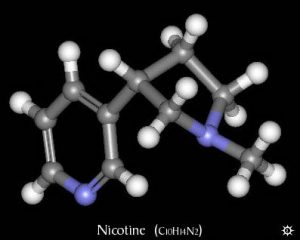New Mathematical Model Accurately Predicts Amounts of Nicotine Emitted by E-Cigarettes
A team of American scientists claim to have created the world’s first mathematical model that can predict the amount of nicotine emitted by electronic cigarettes with up to 90% accuracy.
 Scientists from the Massey Cancer Center at Virginia Commonwealth University started off by collecting various information about electronic cigarettes and how they are used, including voltage levels, concentrations of nicotine in e-liquid and length of time a person could inhale from e-cigs in one puff. They then teamed up with investigators at the University of Beirut to create a mathematical model that could predict the amount of nicotine emitted by a vaporizer as the voltage and nicotine concentration in the e-liquid was increased and the puff duration was extended.
Scientists from the Massey Cancer Center at Virginia Commonwealth University started off by collecting various information about electronic cigarettes and how they are used, including voltage levels, concentrations of nicotine in e-liquid and length of time a person could inhale from e-cigs in one puff. They then teamed up with investigators at the University of Beirut to create a mathematical model that could predict the amount of nicotine emitted by a vaporizer as the voltage and nicotine concentration in the e-liquid was increased and the puff duration was extended.
The mathematical model predicted that, depending on user puff duration, higher voltage devices are likely to deliver higher amounts of nicotine than traditional tobacco cigarettes, when paired with high nicotine concentration e-liquids. “Laboratory results showed that nicotine yields from 15 puffs on an e-cigarette varied by more than 50 times across various device, liquid and user behavior conditions,” said the research team member Thomas Eissenberg, director of the VCU Center for the Study of Tobacco Products and member of the Cancer Prevention and Control research program at Massey.
Furthermore, in a subsequent clinical study, scientists observed that experienced e-cigarette users were more likely to take longer puffs than novice vapers, resulting in higher amounts of nicotine delivers into their bloodstream. Eissenberg believes that these findings confirms that people could become more addicted to nicotine by using electronic cigarettes than by smoking conventional tobacco cigarettes.
The Virginia Commonwealth University professor clarified that electronic cigarettes could indeed be safer that smoking, as currently available scientific evidence suggests, but only as long as the devices and e-liquid are not designed to deliver excessive amounts of nicotine and other dangerous chemicals to users. “When used as intended, an electronic cigarette should not produce a nicotine yield in excess of that of a combustible cigarette, a device that we already know has lethal health effects. If it does, then we are essentially making an already addictive drug delivery system even more addictive,” Eisenberg said.
Thanks to this new mathematical model, researchers will be able to accurately predict how much nicotine will be delivered to users before a new vaping device is even designed. According to a press release issued by the Massey Cancer Center, “These predictions will further enable researchers like Eissenberg and his colleagues to inform federal regulators about evidence-based recommendations on e-cigarette design restrictions that could potentially avoid a serious public health disaster as more people turn to e-cigarettes as an alternative nicotine delivery method.”

















can you please give references?